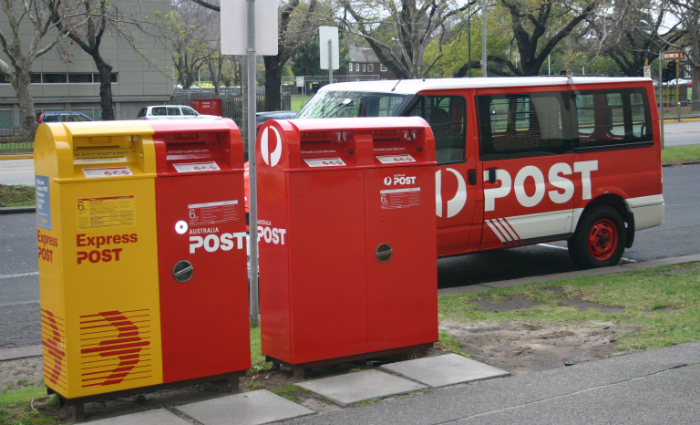
Bulk mail prices will rise by more than 13 per cent on delivery methods printers rely on most, as Australia Post uses its ACCC-approved 10c stamp price hike as justification for further increases from March 31.
The national mail carrier is planning to increase the price of presort mail, which makes up about 80 per cent of bulk mail volumes, by an average of 11.6 per cent for regular delivery and 6.5 per cent for the slower but cheaper surface mail.
However, the price rise will be considerably more for small barcode direct tray mail delivery, which comprises up to 90 per cent of presort volumes, with same state regular delivery rising 13.2 per cent to 59c and interstate 13.5 per cent to 61.2c, and surface mail rising 8.6 per cent to 52c for same state, and 9.6 per cent to 53.8c for interstate. Residue mail, which comprises up to 10 per cent of presort volume, will rise 13 per cent to 63.4c.
[Related: More Australia Post news]
Printing Industries Association of Australia (PIAA) chief executive Bill Healey is outraged with the ACCC’s decision to approve the stamp price and says Australia Post is using it as a ‘Trojan Horse’ to raise the bulk mail price – which it does not have to refer to the ACCC.
He says, “The removal of ACCC surveillance has allowed it to increase price without discounting to take account of the value of the bulk mail sector efficiencies it benefits from.”
“As a result the margin between the basic letter fee and other reserved services such as bulk mail has been significantly eroded. The ACCC’s decision may enable Australia Post to use the 70c revised basic mail rate as a new ceiling for price setting.”
The price rises are critical for the profitability of many direct mail operations, and many in the printing industry fear advertisers will lower volumes to fit their existing budgets or abandon printed mail advertising altogether. Prices already rose in July last year.
[Related: More direct mail and marketing news]
ProPrint can also reveal that according to confidential Australia Post documents provided to industry figures, Australia Post will also raise the price of print post mail, used for magazines and newsletters.
It will increase on June 2 by an average of 6.8 per cent for regular and 2.4 per cent for surface – but as with presort, the prices that matter to printers and their clients will likely go up much more.
Charity mail catches a break thanks to political pressure, having its 11.3 per cent (regular) and six per cent (surface) rises split over two increases on March 31 and September 31.
The mail carrier will also introduce a new timetable for bulk mail delivery from June 2, renaming regular mail ‘priority’ and surface mail ‘regular’, the only improvements of note being that surface mail will take one less day to get from Melbourne or Brisbane and two less days to Perth, with no changes to regular (priority) mail.
An Australia Post spokesperson says: “The improvements to the presort surface delivery timetable shorten the delivery time between longer distance interstate capitals. Our aim is to make this a more attractive option for bulk mail users.”
Australia Post is blaming the increases on falling mail volumes and record losses of $218m in its regulated mail operations and $147m in its domestic mail business (while its parcel division has raised prices by 55 per cent since 2009 and is highly profitable).
Chief executive Ahmed Fahour says: “In FY2012/13, letter volumes were down 231 million – or 6.4 per cent – on the previous year. Over the past five years, the volume of domestic letters posted in Australia has declined by around one billion items – from 4.6b billion in FY 2007/08 to 3.6 billion in FY12/13.”
“The accelerating decline in our letters business is increasingly becoming an unsustainable handbrake on corporate performance.”
Healey says surface mail is an ‘inferior product’ and that Australia Post is trying to create a two-tiered system that will cut out margins for printers and mailhouses.
“It is unreasonably destroying a viable and well regarded communication channel that will continue to be needed and they should be innovating instead of just raising prices,” he says.
“This just adds unnecessary cost to an already struggling communication channel that will lead to a decline in mail volume due to higher costs – some major advertisers have already gone completely online as a result.
“The printing industry is doing it tough and anything that takes demand out of it is damaging. This could all be avoided if we had a productive dialogue as we could work with Australia Post to boost demand for direct mail.”
Australia Post says the government has until March 22 to veto the proposed stamp increase.
Comment below to have your say on this story.
If you have a news story or tip-off, get in touch at editorial@sprinter.com.au.
Sign up to the Sprinter newsletter
